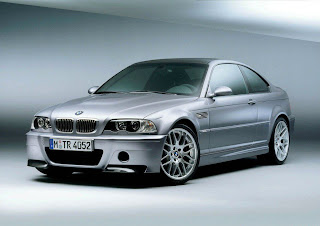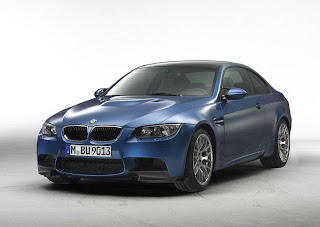Production of the M1 mid-engine sports car had already been discontinued for some time and after completion of its activities in Formula One BMW Motorsport focused all its energy on touring car racing. This led to the development of what would become the most successful touring car ever, the M3.
In order to enter competition in the World Touring Car Championship, BMW had to build at least 5,000 units of the homologation special within twelve months. So BMW developed a racing car according to the rules which was to be produced in a version licensed to drive on open roads for everyday use. The BMW M3 was based on the popular E30 3-Series and unveiled at the 1985 Frankfurt Motor Show, where it impressed the public.
The BMW E30 M3 featured body enhancements like the front spoiler and rear wing, air dams all around to boost the aerodynamic properties and massive wheel arches to accommodate a wider track with wider and taller wheels and tires. In fact, the only exterior body panels the standard model 3-Series and the M3 shared were the bonnet, roof panel, and sunroof. The car also featured improved systems for handling, suspension, and braking. But its most impressive features could be found underneath the bonnet.
The first M3 was powered by a high-revving 2.3 liter straight-four piston engine which was chosen because of its compact dimensions. The first prototype of the S14 engine was developed by engineer Paul Rosche in just fourteen days. The engine was based on the reliable and very successful M10 block designed by Alex von Falkenhausen in the 1950s. This block was also used as the basis for the turbocharged BMW M12 motorsport engine which produced over 1,300 horsepower, making it the most powerful engine ever used in Formula One. It was also used in over 3.5 million BMW cars, a great testimony to its versatility. As for the M3, the engine developed a maximum output of 195hp which allowed the car to sprint from standstill to 100km/h in 6.9 seconds. Its top speed was 235km/h, but later versions and specials like the Evolution were a bit faster.
As stated before, the BMW M3 became the most successful car in international touring car racing. Within five years, the E30 M3 won two European Touring Car Championships, two times the German Touring Car Championship (DTM), two times the British Touring Car Championship, as well as a large number of other international event and championships. The car was also successful on the road, a total of 17,910 units were sold, including 600 2.5 liter M3 Sportevolution models as well as 765 hand-built M3 convertibles.
Its successor the E36 M3 debuted in February 1992 and was the first M3 powered by a six-cylinder engine, displacing 3.0 liters and developing 286hp. BMW sold more than 70,000 examples of the car which was available as saloon, coupe and convertible, and a handful of special models, within seven years.
With the new Millennium also came a new M3. The E46 M3 introduced in 2000 was the third generation of the popular and successful car and offered a bit more power and performance. At the time of its introduction, this engine had the highest specific output naturally aspirated engine ever made by BMW (except in the McLaren F1), producing 343hp and 365Nm of torque. But the true highlight of this model was the resurrection of CSL.
The BMW M3 CSL was a limited edition version of the M3, with only 1,400 cars being produced for its 2004 model year run. The three letters represented ‘Coupé Sport Leichtbau’ ‒ German for ‘Coupe, Sport, Lightweight’ ‒ and as its name suggests, an emphasis was put on reducing weight. The roof, center console and door panels were made of carbon fiber reinforced plastic and a lot of other tweaks were applied to save weight. Other upgrades included a further refinement of the suspension, brakes, aerodynamics and of course the engine, which was tuned to 360hp.
In 2007 the fourth generation BMW M3 entered the market. This was the first M3 to be powered by a naturally aspirated, high-revving 4.0 liter V8 that generated 420hp and 400Nm of torque. The model-range consisting of a saloon, coupe and convertible was enriched with the powerful and limited edition M3 GTS. The GTS features a 4.4 liter engine producing 450hp and 440Nm of torque, making it the fastest and most potent M3 ever to be produced by the car maker from Munich.
At the time of the introduction of BMW’s high performance division 40 years ago, marketing director Bob Lutz said: “A company is like a human being. As long as it goes in for sports, it is fit, well-trained, full of enthusiasm and performance.” The fact that BMW is nowadays regarded by many as ‘the ultimate driving machine’, is due to iconic cars like the 3.0 CSL, M1, M3 and M5.
Of course there are also models like M635 CSi, M6, X5 M, X6 M, 1M Coupé, the Z3 based M Roadster and M Coupé, and the Z4 M Roadster and Z4 M Coupé, but it was the 3.0 CSL which laid the foundation on which BMW M was built, it was the M1 which provided the blueprints for the architecture and engineering, and the M3 and M5 were and still are the pillars of success.
And BMW keeps on building, the upcoming BMW M3 Sedan will debut in 2013, followed a year later by the M4 Coupe, ready to add another chapter to the rich history of BMW’s high-performance division
via: gtspirit
via: gtspirit
You have read this article BMW /
bmw m3 /
News
with the title The Story of 40 Years BMW M ‒ The BMW M3. You can bookmark this page URL http://rouserworks.blogspot.com/2012/06/the-story-of-40-years-bmw-m-bmw-m3.html. Thanks!
























No comment for "The Story of 40 Years BMW M ‒ The BMW M3"
Post a Comment